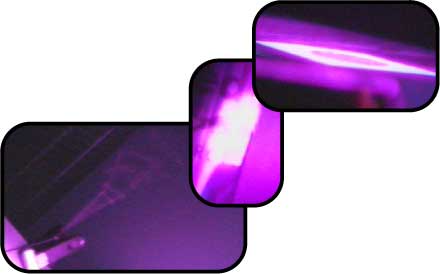
One of the greatest aspects of film is that you, the audience, can become someone else or go somewhere that you wouldn't be able to go in real life. The aspect of fantasy and composition of each individual member of the audience over the hero is perhaps the only reason action movies make any money. The good director knows this and frequently asks himself a critical question: How do I (the director) get the audience more involved? How do I (the director) make each member of the audience sit up and become a part of the story? The answer is simple; make the film more subjective.

There are many ways to make a film more subjective, be they plainly obvious or exquisitely subliminal, and every technique brings about its own effect. A very common way to subjectify a film is to add voiceover. If the director takes a story and wants to tell it through a certain character's eyes, an easy way to achieve such an understanding with the audience is to have your main character flat out tell them "hi, this is my story" right in the beginning. Voiceover is also a great way to get a lot of exposition across quickly (This is my town, That's my house, etc.), both in establishing the setting and the character of the film. Subliminally, the audience acknowledges the fact that we are now inside the main character's head, hearing him think and seeing the world through his eyes.

Another great way of showing how the audience is seeing his version of the world is Point of View shots. With the awesome power of montage, a shot of some character looking out a window followed directly by a shot looking out that same window tells the audience that whatever they see is also what that character sees. Although many times this violates the 180-degree rule, the audience quickly understands the meaning implied. POV shots help to both immerse the audience in a character and drive the narrative.

Although it is less used because it's harder to pull off, distorting an event or scene based on a character's memory or perception also helps to make a film more subjective. For instance, in Terry Gilliam's 12 Monkeys, Gilliam uses the dream sequence to this effect. Each time we see the sequence, it is slightly different, based on what the character remembers at that time. Through this technique, the audience is really drawn into James Cole's consciousness. Also used in films such as He Said, She Said and The Usual Suspects, showing events repeatedly, different each time, reinforces the inherent theme of Point of View: what you're seeing may very well be wrong. Seeing it again for the first time really shows the audience that an imagination or misinformation is behind the camera, and that they are not omniscient as viewers, but part of story itself.

Of course, bringing the audience into the psyche of his main character is not what the director always wishes. In many instances the director may want his audience to be detached from the story, to ensure that they believe what they are seeing. By strictly following the rules of third person narrative, the audience stays comfortably distanced from what's going on up on that screen by the darkened theater. This is imperative if you, the director, want the audience to follow your narrative easily and concisely.

Less use of close-up, movement away from formalism, and even lack of defining protagonist all help to make a film as objective as possible, following a completely realistic view of the world. Voiceover, Point of View, and scene distortion all contribute to a more intentional, subjective film. Each has its moments, and both objective and subjective elements are present in almost every "good" film. A good director knows when to go one way, and when to go the other. Antagonists can be made infinitely more creepy and disturbing through careful use of audience perception and Point of View, while other movies have failed because they bring the audience too far into a character, not giving them a release when the film ended. A film with no character psychology however, proves to be as dry as a documentary. Audiences will have a hard time identifying with the hero, and therefore will not place themselves inside the film. When a balance is reached, the film is magical and mystifying in it's ability to launch the audiences out of their seats and into the screen.

